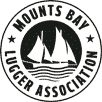History of Happy return
Loss of the Good Intent – FE21
With a gale raging on the evening of 5 October 1904, the Folkestone fishing fleet out in West Bay after mackerel, still had not returned to port. With them was the Penzance built lugger Good Intent FE21, owned and mastered by (Jack) John Warman Saunders and manned by his sons John W Jr and Edward, with the three having equal shares in the haul.
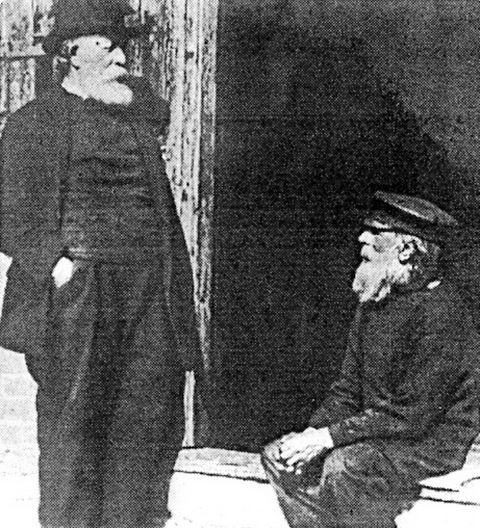
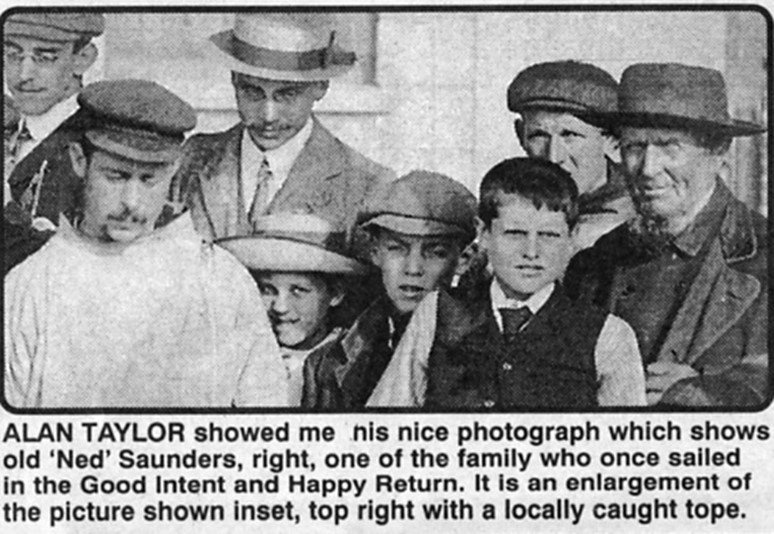
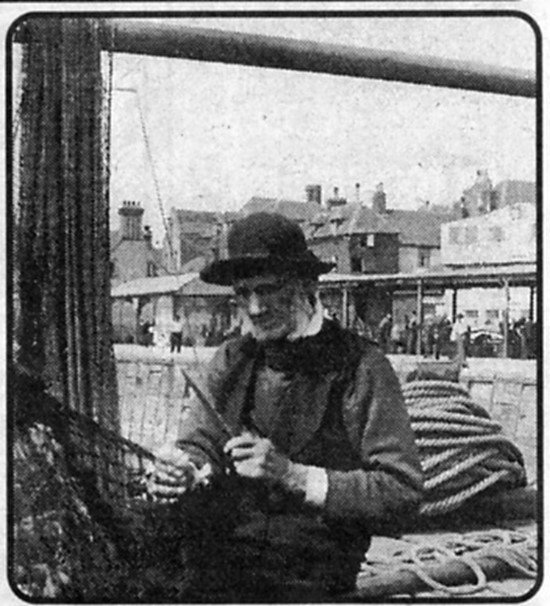
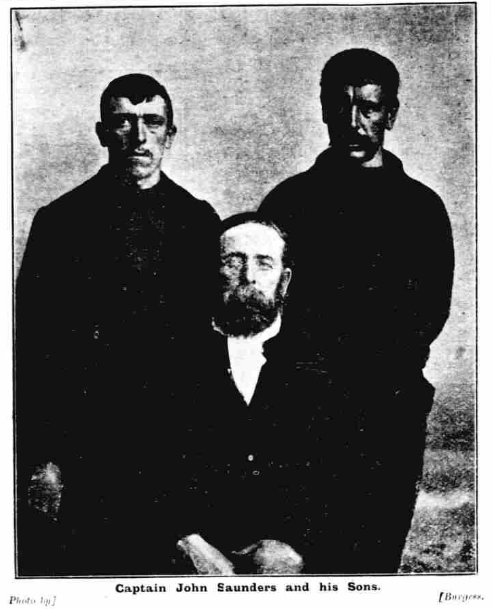
Families had gathered on the Stade when, at 9.45pm, the first boat made it safely into the harbour. But later with three boats missing, it was found that neither the Good Intent nor the Pride and Envy NN21 from Eastbourne had made it back in.
NN21 has rounded the head of the pier where she was in trouble. It is then thought that the now mastless and unmanageable Good Intent ran into her before being swept east.
When flares were seen from the direction of the rocks at the foot of Copt Point, and with two sets of lights visible, the lifeboat was launched under sail and oars by Coxswain Stephen Cook and crew. Narrowly escaping destruction itself, it was at length pulled out using ropes.
Just after midnight sight of one set of lights was lost and at 1.30 in the morning the lifeboat battled its way back to harbour bearing the saved crew of the Good Intent which had foundered on the Mole Rocks, and the sad news of the loss of the Pride and Envy with all hands, nearby. The Lifeboat within minutes turned back out and made off to the third boat, which having been at anchor had broken its cable, bringing it safely in.
The RNLI awarded the crew of the lifeboat £3 5s to be divided between them for their bravery in such adverse conditions, two of them having been washed overboard and hauled back in during the operation. Coxswain Cook was awarded the silver medal for lifesaving, only three of which were presented in 1904.
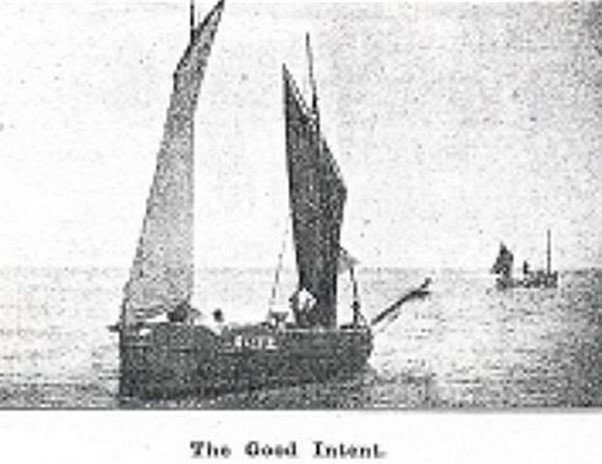
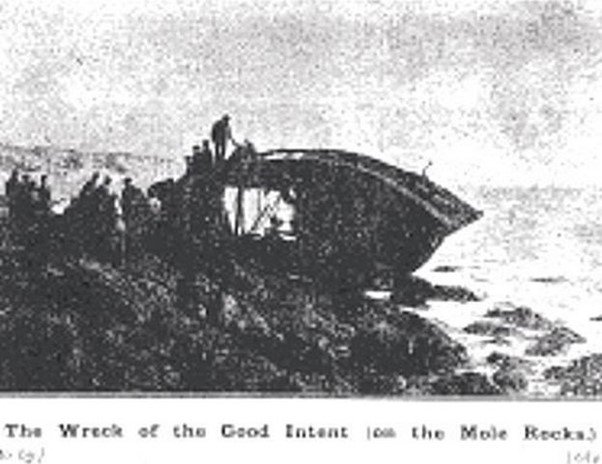
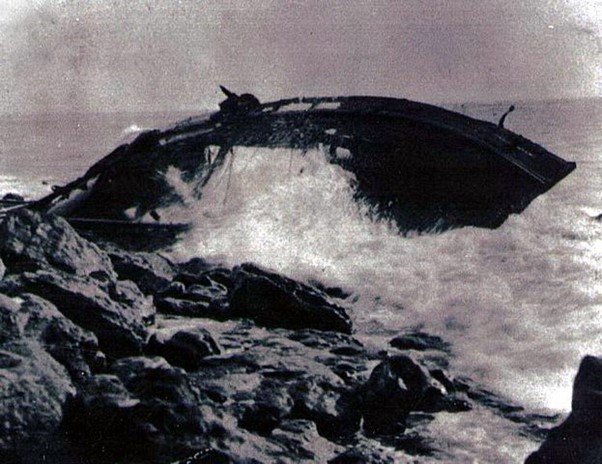
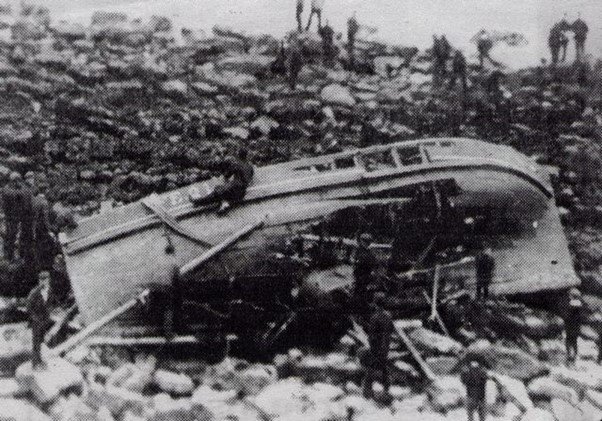
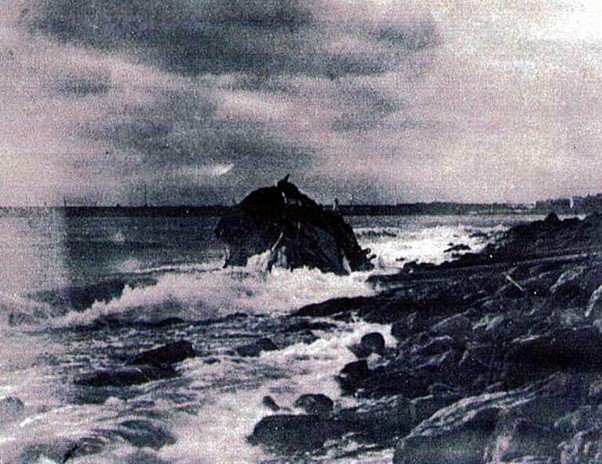
Some pictures of the fishing fleet and fishermen in Folkstone at the turn of the nineteenth century.
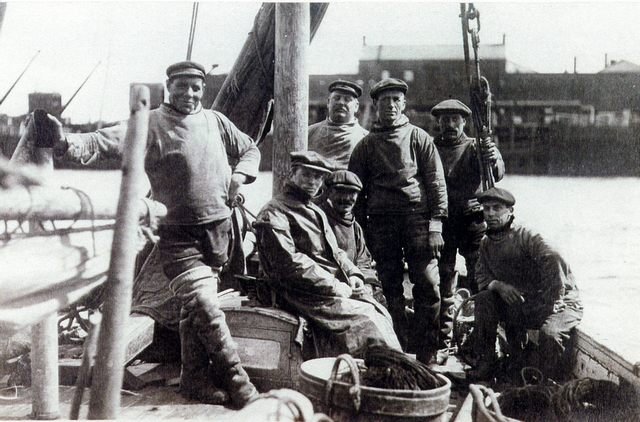
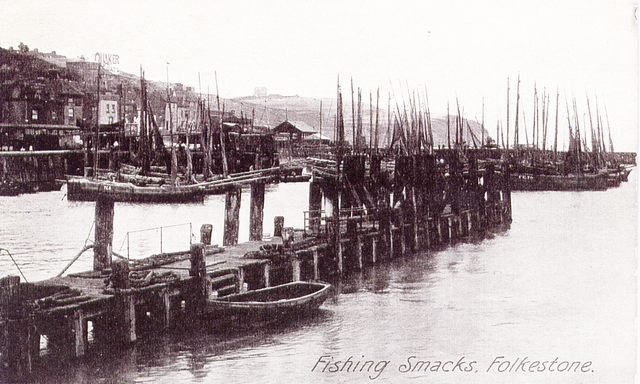
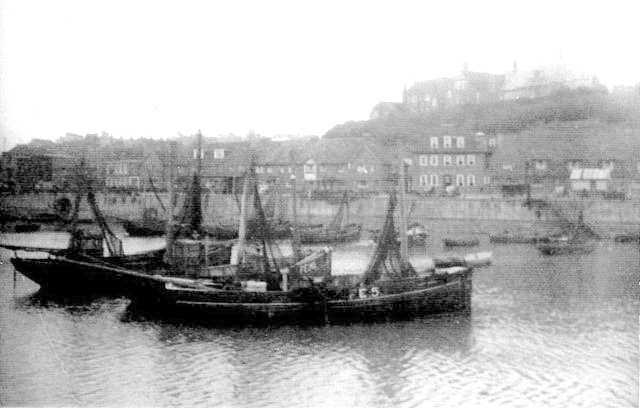
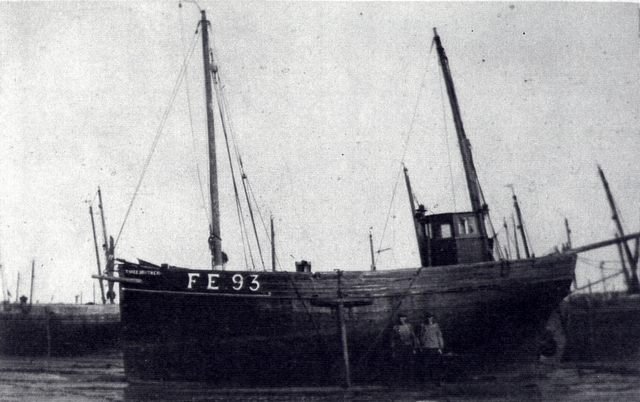
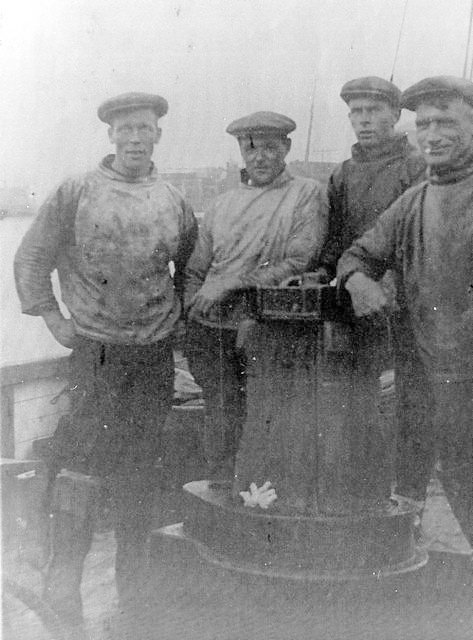

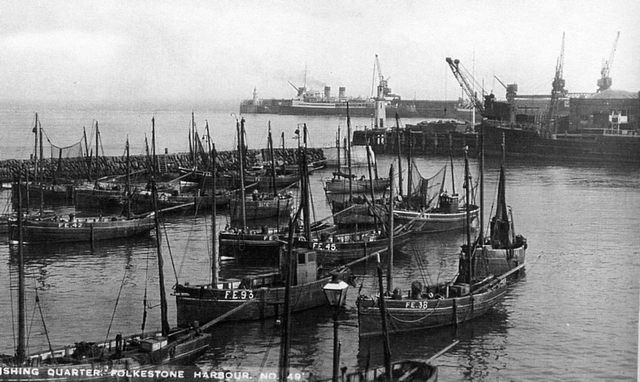
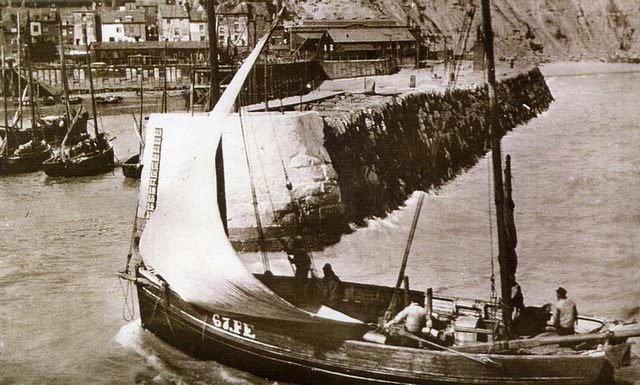
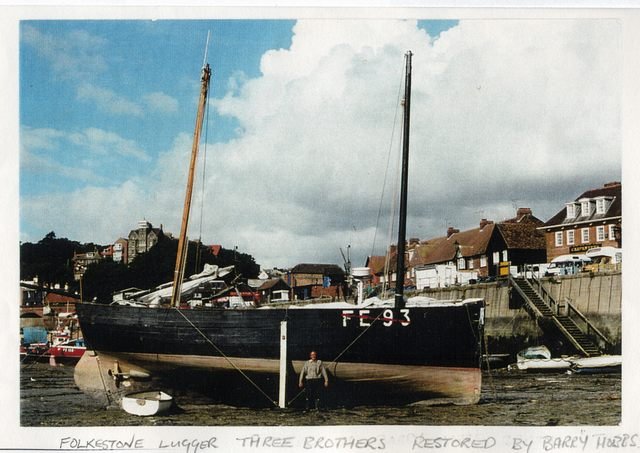
Birth of the Happy Return – FE5
With three families dependent on the Good Intent and her catch and ‘apparently’ only a small insurance coming Saunders’ way, eventually £100 was paid, and a call was put out by the Mayor, George Peden, of Folkestone to fund the purchase of a new boat for him.
Subscriptions included £7 7s from Sir Edward Sassoon Bart MP, £7 from the Radnor Club, £2 from the Fishermen’s Bethel, 10s from a sympathiser (Kendal), 2s 6d from two Londoners, and a further 2s 6d from Miss E Warburton. A number of esquires, reverends, aldermen, missuses and misses gave, and in all a total of £121 9s was raised. A Mr Jones with unknown motive attempted to scupper the Saunders gift fund. He alleged that Saunders was a man of means, but after extensive enquiries into the validity of these claims by Mr Cooper of the Fishermen’s Bethel, they were pronounced unfounded, and a new boat was ordered from Kitto’s of Porthleven, so beginning the ‘Happy Return’.
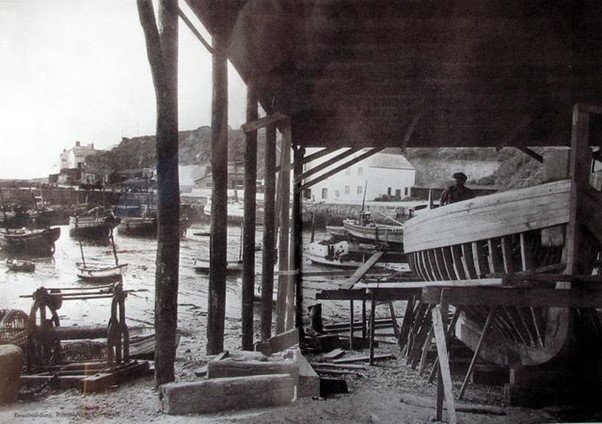
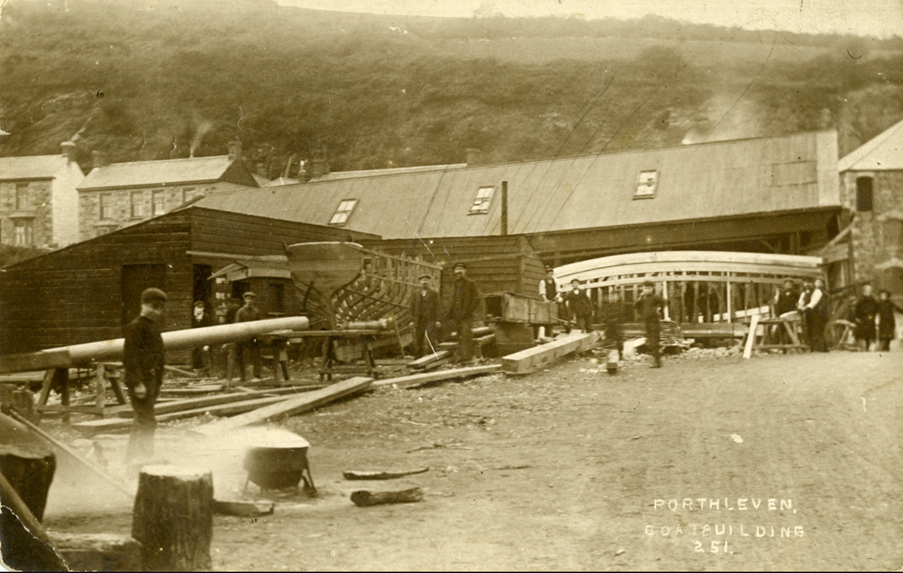
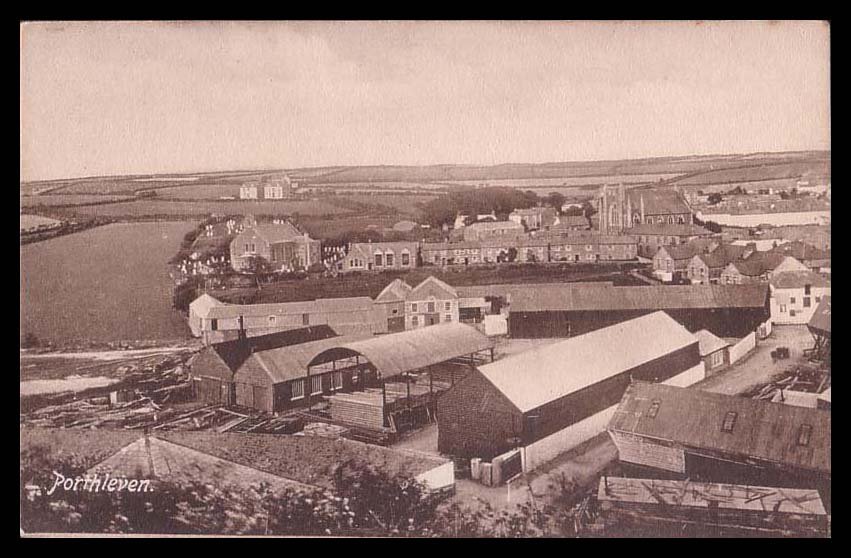
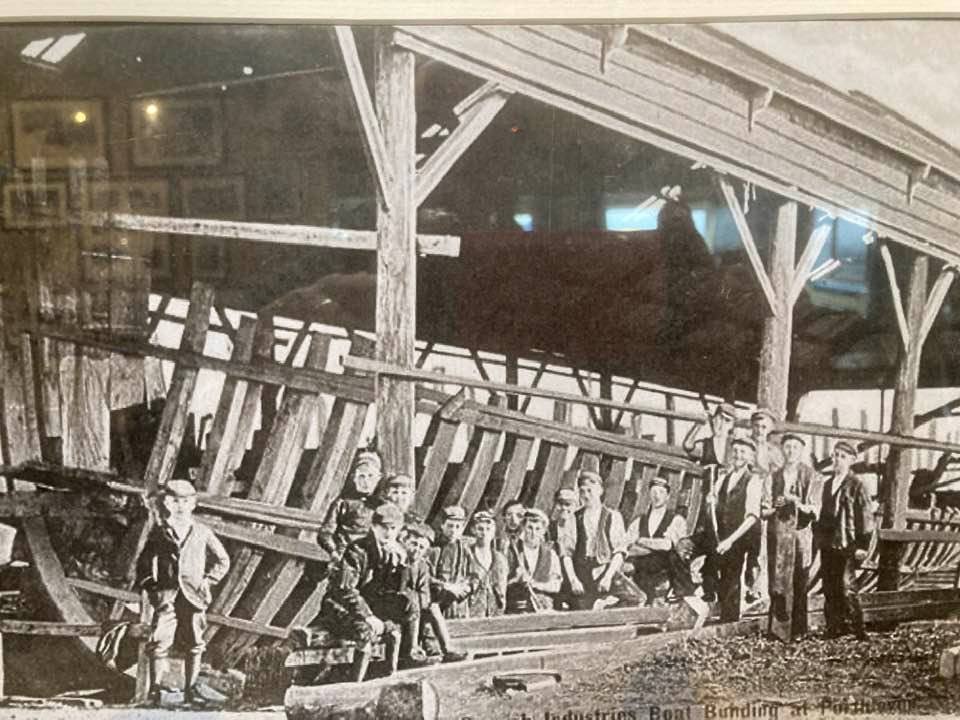
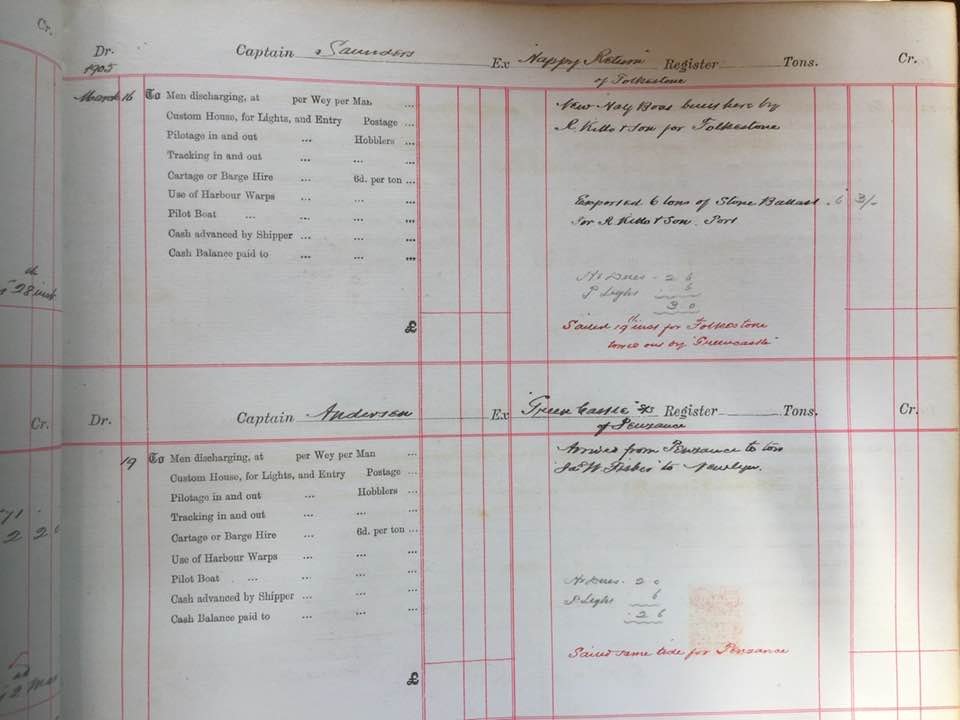
Porthleven – Kitto’s Yard
Kitto’s yard had already built some of the drivers, trawlers, ketches and pilot boats working out of Folkestone including the ‘Ellen’ in 1896, ‘Young Steve’ 1897, the ‘Elsie’ for another Saunders in 1900, and ‘Primrose’ 1902, with other boats such as the ‘Willie’ 1899 also being built in Porthleven. Kitto’s and other local boatyards were also building boats for nearby Kent and South coast ports like Dover, Ramsgate, and Hastings. West Cornwall Boatbuilders were highly rated and their vessels sold around the entire British Isles Coast.
The ‘Happy Return’; named because of the incredible rescue of its crew from the sinking of the ‘Good Intent’; arrived in Folkstone on Saturday the 26th of March at a cost of £180. Registered on April the 4th 1905 as a dipping lugger belonging to the port of Folkestone and propelled by lugsails for lining and trawling, she was described as ‘a trim little craft, and is a little larger than the average Folkestone fishing boats.’ Happy Return comes in at 37’3” with a gross tonnage of 18.19, just under the 40’ length which would move her up a class and cost more in fees. She is built of cavel planking on sawn oak frames. The planking used in Porthleven was either Norwegian Red Deal or at extra cost Pitch Pine.
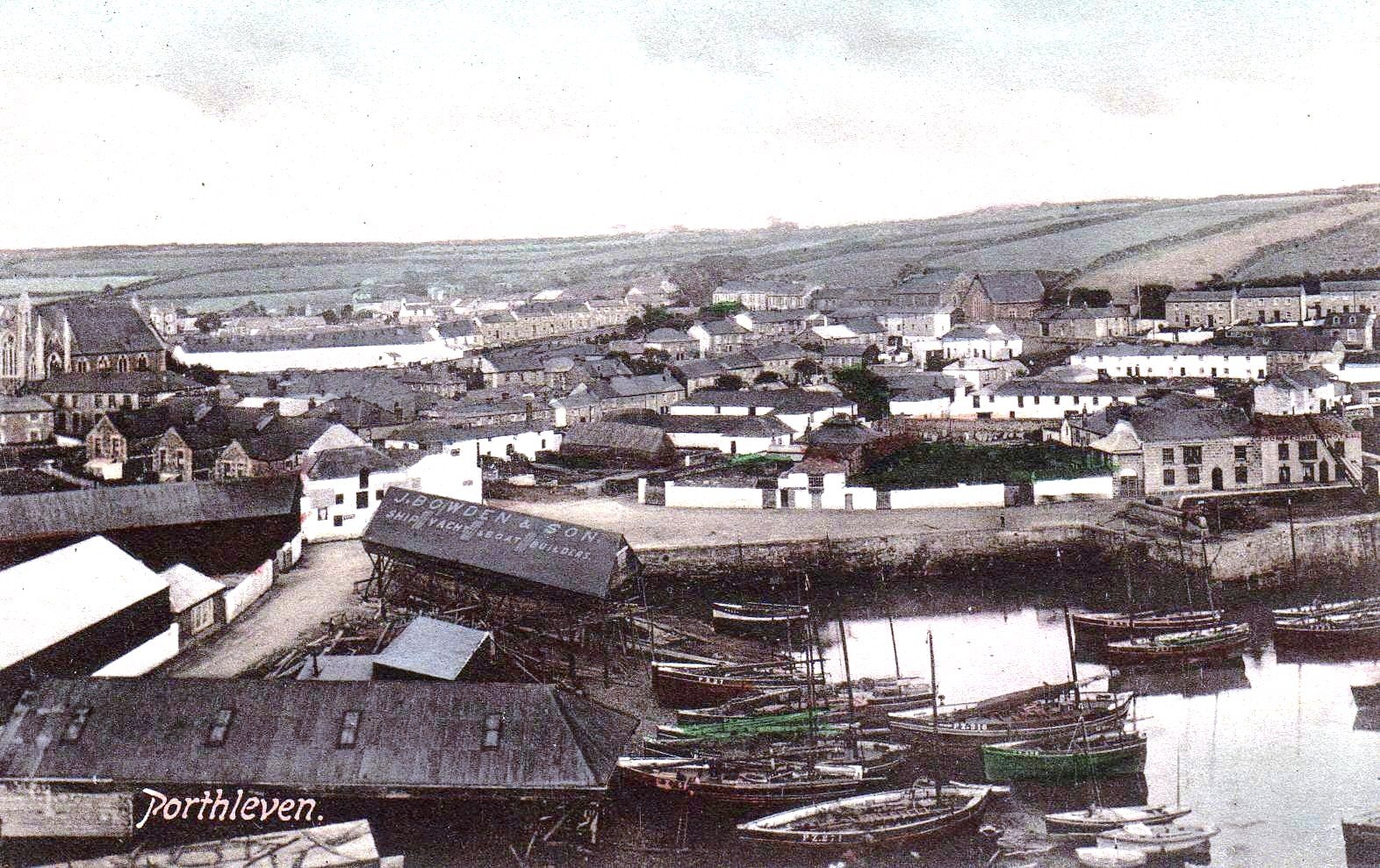
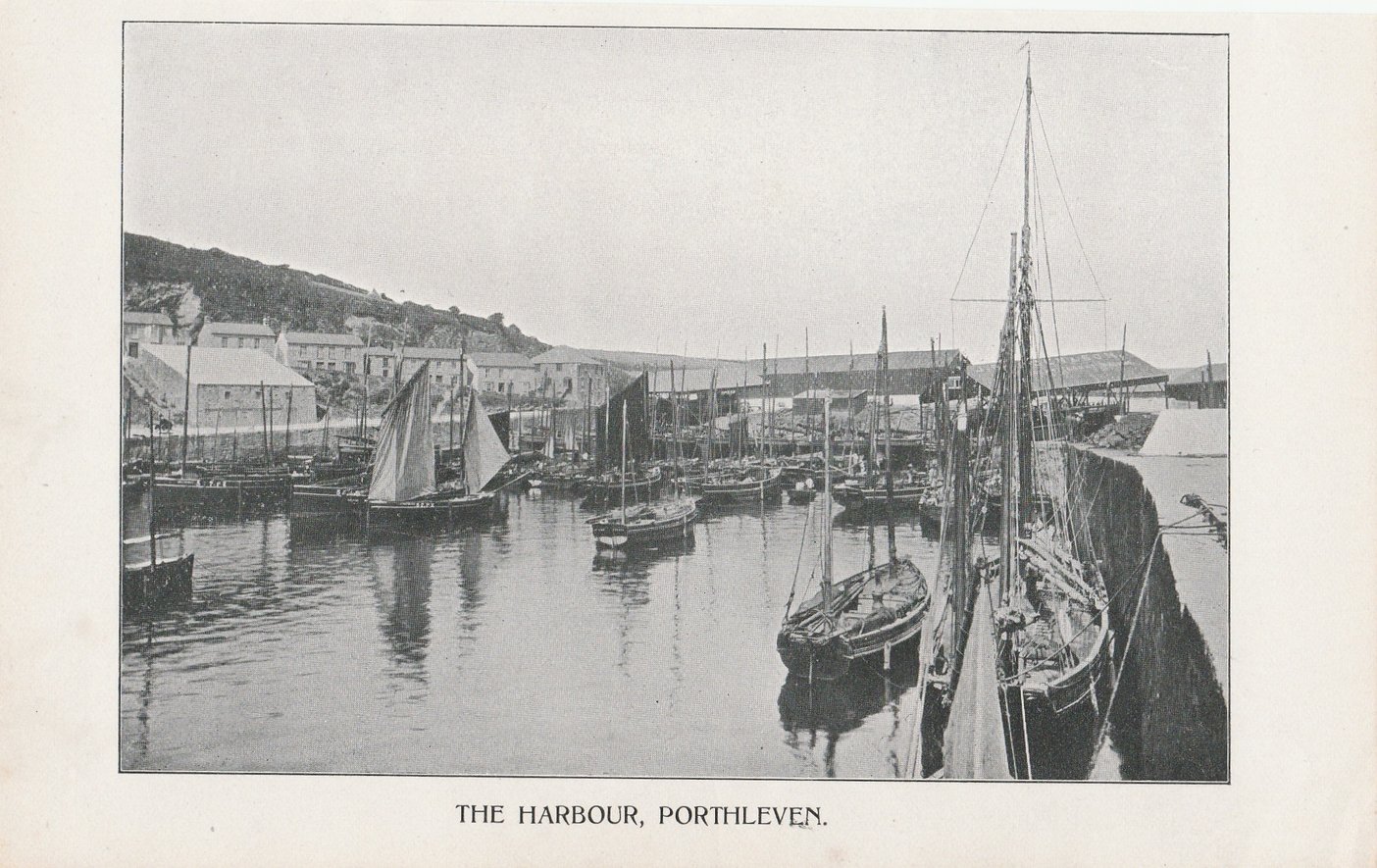
First World War
Although little is known specifically of the Happy Return over the next three decades, it was a turbulent period. On 4 August 1914 at about 20.15, around the UK coast, many fishing boats were out at sea. Less than three hours before Britain declared war, the admiralty wired all harbours to say fishing had to be immediately suspended. Many boats were far from their home port, often with several days sailing between them.
The first UK fishing boat was lost to the Germans in the seas around Iceland on 7 August, it was the first the crew knew of the war. Fishing boats from both sides were being interned but with the need for food security in Britain paramount, fishing recommenced just over a week later. Fishing had become a truly dangerous occupation.
As the First World War progressed, the Hull fleet lost two boats in the Folkestone area of the Kent coast in 1915, one wrecked the other mined. The same happened again in 1916. Further afield three were mined in 1917, off the Sussex Coast, the English Channel near Boulogne and Portsmouth. Many more of this fleet were lost in other British coastal area waters, the main causes were attacks by destroyers, mines and submarine fire.
Many larger fishing boats from the East Coast were commandeered and pressed into use for the war effort, fishing in pairs they swept around harbour approaches, clearing mines and carrying out anti-submarine work. Britain had 1,700 ships and 25,000 men detailed for minesweeping.
Meanwhile Folkestone harbour welcomed more than 100,000 Refugees, mostly Belgians fleeing the German forces, arriving by whatever means possible, including many small fishing boats. From 1916 onwards over 10 million troops, nurses and other personnel embarked for war, while as early as August 1914, the wounded were being brought back through this harbour and the fishing fleet continuing to work. In 1916 Happy Return had a small Kelvin 8hp engine fitted, helping with manoeuvrability in this busy port.
Some pictures of Happy Return in Folkstone as a working boat.
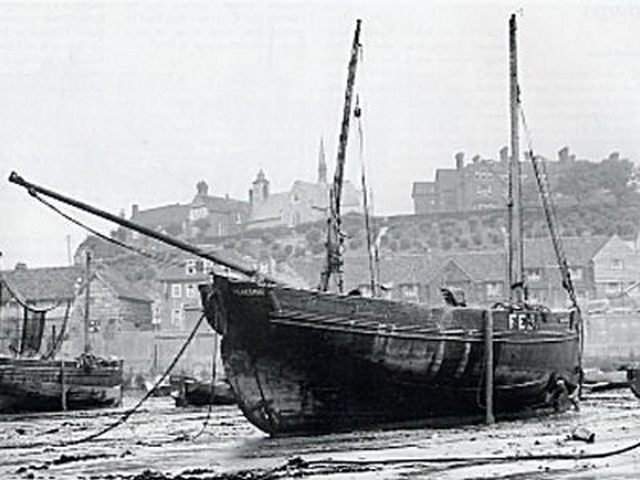
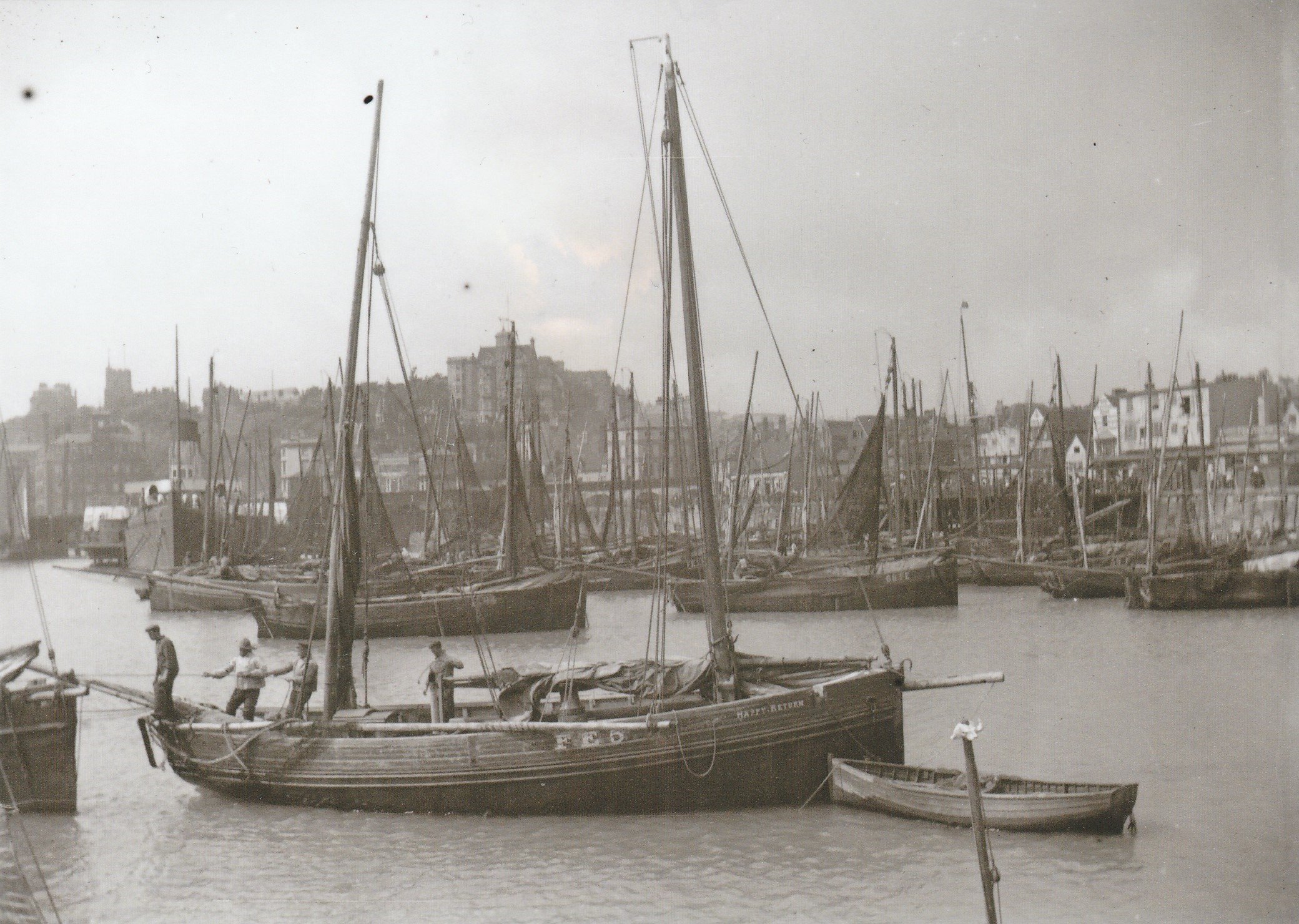
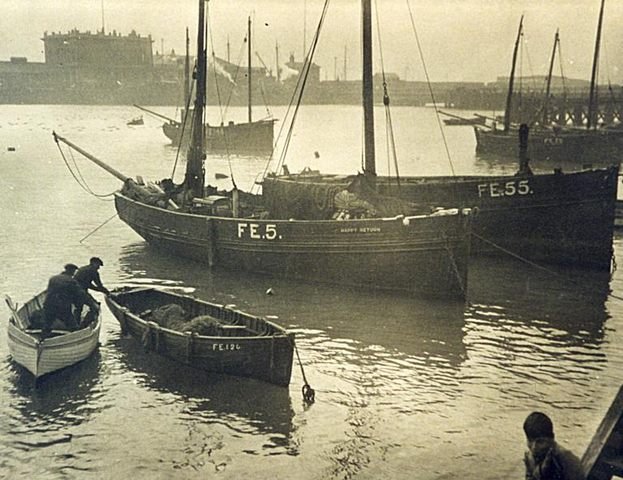

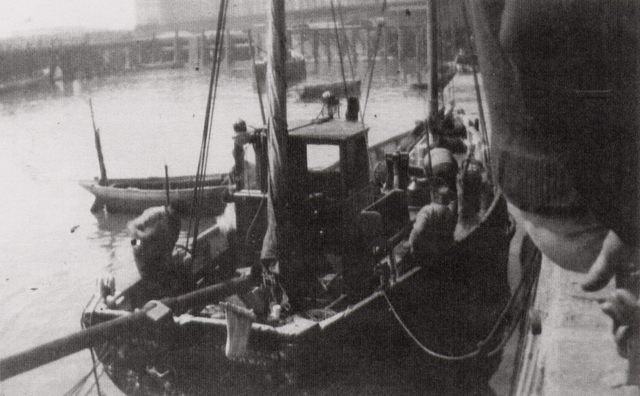
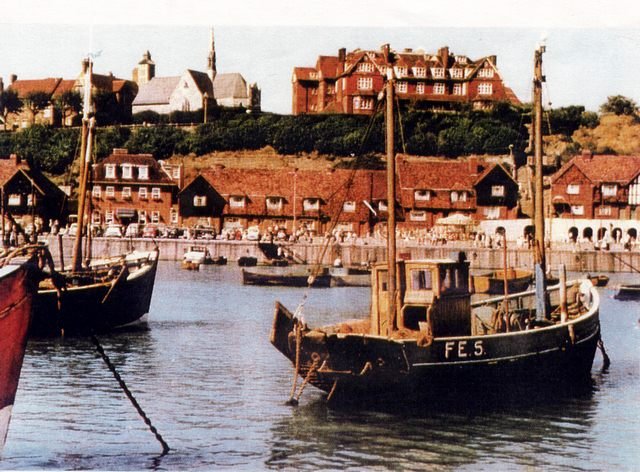
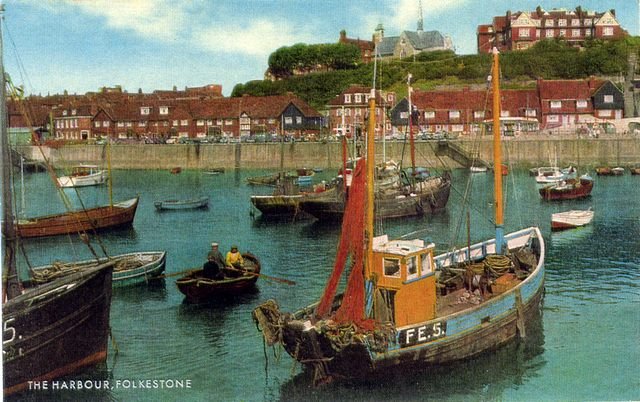
Happy Return during World War 2
Between the wars life returned to normal for the Folkestone Fleet, but as elsewhere, an eye had to be kept out for mines which could still occasionally surface or get caught in nets. By 1929 Jack Saunders was 78 years old and thinking of retirement, so on the 22nd of February John W Saunders jr. by now aged 57, took over ownership from his father.
During this inter war period most of the young fishermen in the Folkestone Fleet joined the Royal Naval Reserves, and when war was again declared in 1939 they were immediately called up: ‘Several of the men said that they would fish when on leave and earn a nice wage… against rules and regulations. Most of the boats fished as normally as they could, although fishing was regarded as an essential industry ... a lot of money was earned, because fish was on a regulated price and could only be sold through licenced fish merchants. Quite a few men got into trouble with the tax man long after the war, virtually bankrupting them. The boats were asked to mount Lewis guns on their decks, several boats got shot up by enemy aircraft, consequently the guns were soon removed. There was one incident of “friendly fire” one evening when 3 fishermen were shot at by a sentry on guard at the harbour.’ With thanks to John Gale – see also ‘Folkestone’s Fishing Industry Past and Present’ along with a section on the Happy Return.
Unexploded Mines
Unexploded mines were a constant threat to fishing in the area. In 1940, after four of their number were killed by an explosion in the channel three miles off Dymchurch on New Year’s Day; Folkestone fishermen, along with the coxswain of the lifeboat, protested to the Admiralty against their practice of sinking the mines without detonation, citing that they would remain a problem for many years after the end of the war.
Operation Dynamo
The Operation Dynamo evacuation of Dunkirk by a flotilla of little boats, overseen from Ramsgate and Dover took place between May 28th and June 4th 1940 rescuing 338,000 British and French troops, whilst being bombarded and strafed from overhead by Hitler’s Luftwaffe. According to the Association of Dunkirk Little Ships ‘The majority of Vessels were requisitioned by the government, some were taken without the owners knowledge, a small percentage were taken over by owners themselves as they volunteered for the rescue mission.’
But on the 5th of June millions from across Europe were still fighting a rear-guard action in France, as the final German Offensive in the Battle of France – ‘Fall Rot’ got under way. Those still fighting included General De Gaule’s Tank Division and the 51st Highland Division, along with Polish, Czech and French troops. They were battling against Rommel’s 7th Panzer Division. Having already been cut off from Dunkirk; they found, when getting to the Port of Le Havre where another evacuation of troops was to take place, that this had suddenly also become impossible, pushing many to St Valery-en-Caux.
Operation Cycle
So Operation Cycle was organised to evacuate allied troops from both Le Havre from the 10th to the 13th of June, with over 11,000 troops rescued; and St Valery-en-Caux on the 10th and 11th of June with 3,321 rescued, including some Highlanders. Remaining Highlanders and other troops numbering some 6,000 were taken prisoner on the 12th of June.
Operation Ariel
The final rescue Operation ‘Ariel’ took place further down the coast from various points, between the 15th and the 25th of June, evacuating 191,870 further troops and civilians and the loss of an unknown number of passengers on the HMT Lancastria, sunk by Luftwaffe attack on the 17th. This was ‘The greatest loss of life in a British Ship’. (ADLS)
Association of Dunkirk Little Ships
Vessels taking part in these rescue operations are commemorated by the Association of Dunkirk Little Ships; and recently, and unexpectedly, documentation was discovered proving that Happy Return had taken her part as one of the vessels in Operation Cycle, and is now honoured in the Association of Dunkirk Little Ships list. As such, she would be entitled to display a brass plaque reading ‘Dunkirk 1940’ and to fly the association flag.
Kipper Patrol
On March 22nd 1941 the local paper reported that on the previous Thursday ‘A murderous attack’ by two Messerschmitt 109s on small fishing craft in the Dover Strait had occurred. Bullets had penetrated the deck and wheelhouse causing the skipper to throw himself flat inside. As soon as they could, they brought in their nets and ran for harbour. It was because of attacks of this kind that the 608 Squadron became the ‘Kipper Patrol’. Set up initially in 1930 as a day bomber squadron, their remit changed in 1939 to a general reconnaissance unit flying under RAF Coastal Command protecting fishing and shipping against enemy aircraft and searching out their submarines all down the East coast and Channel.
Happy Return Changes Owners
July the 18th 1941 again brought about a change in ownership with Happy Return passing from John W Saunders jr. to Johnnie Fagg, a member of another well-known Folkstone fishing family, some of whom are still to be found living in the area today. Johnnie’s crew are thought to have been Bob and Harry Featherbe, again from Folkestone.
Luftwaffe Attacks
On the 9th of May 1943 bombs were dropped among sprat boats off Folkestone harbour. On the 11th, the Fisherman’s Bethal, which had gifted some of the money for the purchase of Happy Return, was hit; again by Messerschmitt 109’s. On the 12th of December bombs were dropped on the rocks to the East of the harbour and by the end of the year the towns people only required another £800 for the Folkestone and Hythe Spitfire, by the following August, 1944, it was in service. Also in 1944, 15 miles off the coast of Dunkirk, three fishing boats out of Folkestone rescued eight American Airmen who had been shot down and spent 43 hours in small dinghies, signalling with a torch. The fishermen were rewarded by the RNLI.
HAPPY RETURN POST WAR
Subsequently she was sailed from a number of ports and was modified to meet different owners' needs before being decommissioned in 1998 and handed to the National Fishing Heritage Centre in Grimsby as a boat of heritage and historical importance.
MBLA had been formed in 1993 with the aim of acquiring and restoring a Mount's Bay lugger for the area. We were contacted by the Heritage Centre and were very pleased to take on responsibility for Happy Return.
She was sailed to Penzance in 1998 and spent four years being extensively rebuilt to her original design by a very dedicated team of MBLA founder members before being re-launched in 2003 to be sailed regularly and extensively in Mount's Bay and further afield every year.
For people interested to find out more there is a fascinating archive about the history of Happy Return and other local boats and fishing in West Cornwall and a great many old photos - please contact us for details on how to access it.
Song and lyrics by Stuart Pendrill - Happy Return (FE5).
